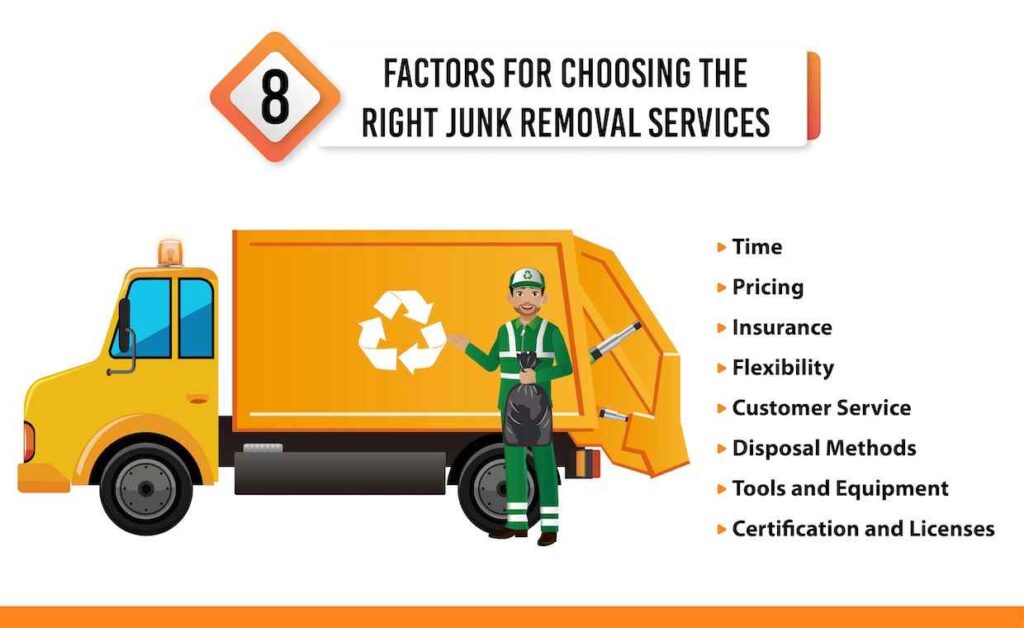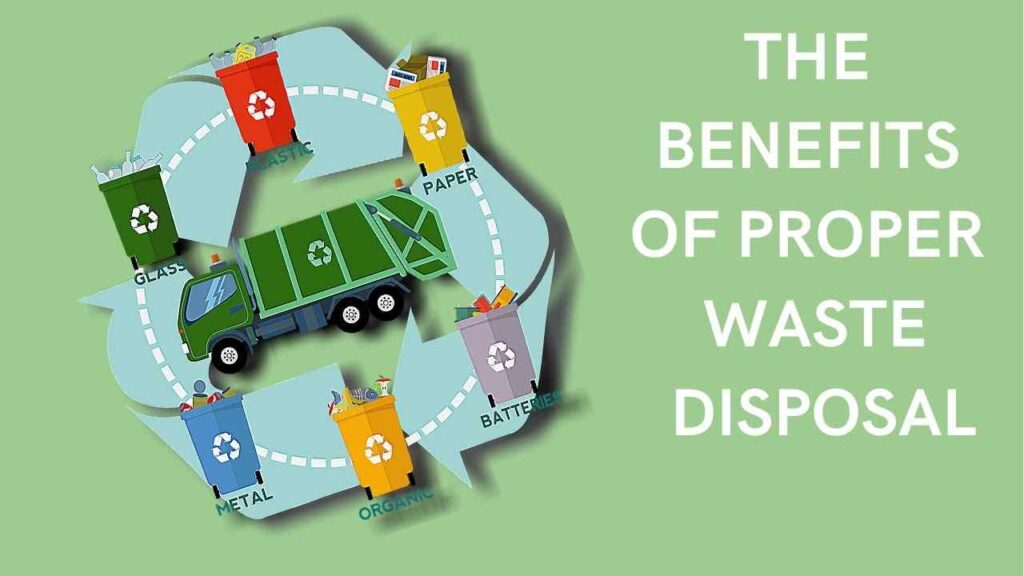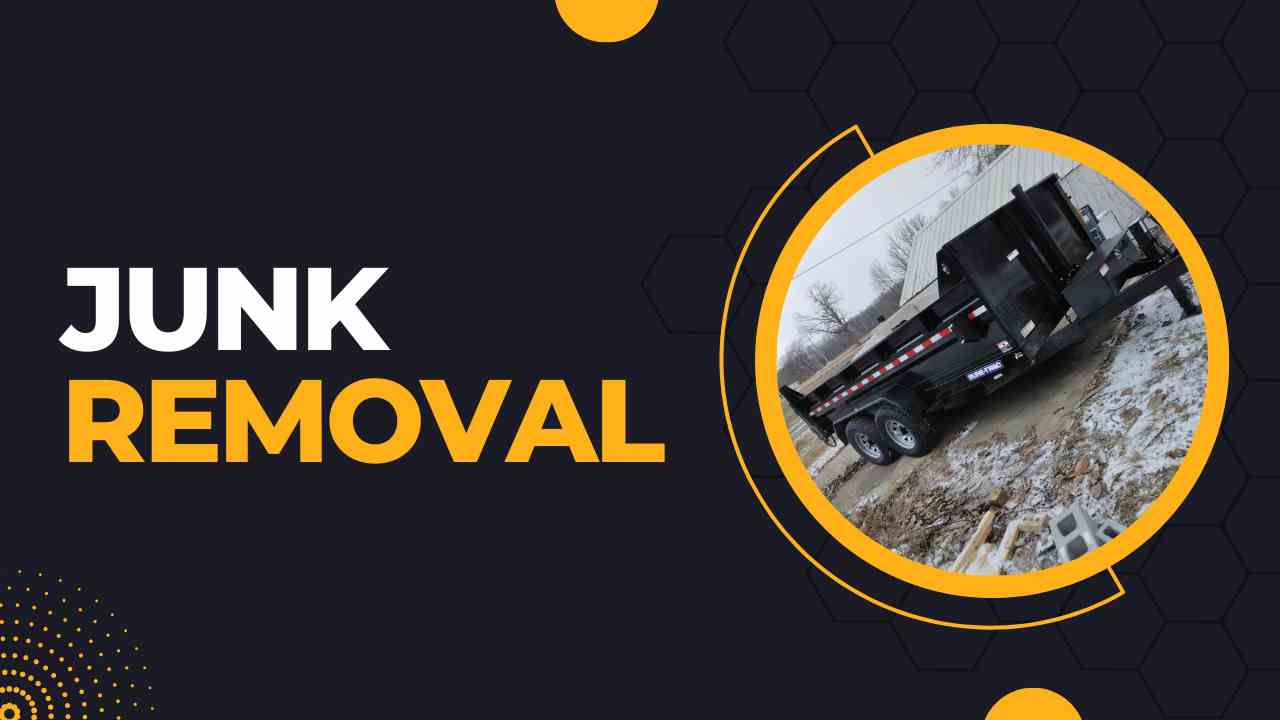Ensuring safety during the junk removal process is essential for a smooth and hazard-free experience. Whether you’re clearing out clutter from your home, office, or a construction site, handling heavy or potentially dangerous items requires careful planning and the right precautions. In this guide and with the help of A & B Junk, we will explore practical tips and best practices to help you navigate the junk removal process safely and efficiently, making it easier to maintain a clean and organized space without compromising on safety.

From proper lifting techniques to using appropriate protective gear, every step matters in preventing injuries and ensuring the safe disposal of unwanted items. Junk removal services emphasize the importance of these safety measures to protect both their workers and clients. Additionally, being aware of hazardous materials and following proper disposal guidelines can prevent environmental harm and health risks. Whether you’re doing it yourself or hiring professionals, prioritizing safety during junk removal services is key to a successful and injury-free process.
Importance of Proper Lifting Techniques
Proper lifting techniques are crucial in junk removal to prevent injuries and ensure efficiency. Always bend your knees and keep your back straight when lifting heavy items. Avoid twisting your body and use your legs to lift, not your back. For particularly heavy or awkward items, use dollies or get help from another person. Regular training on lifting techniques can significantly reduce the risk of musculoskeletal injuries among workers. By following these guidelines, you can protect yourself from strains and sprains, making the junk removal process safer and more effective. When it comes to appliance removal and environmental responsibility, these same principles help ensure that large, cumbersome items are removed without causing harm to individuals or the environment.
Essential Protective Gear for Junk Removal
Wearing the right protective gear is essential in junk removal to safeguard against injuries and exposure to harmful materials. Gloves protect your hands from sharp objects, while safety glasses shield your eyes from debris. Sturdy, steel-toed boots provide foot protection, and a hard hat can prevent head injuries when working in environments where items could fall. Additionally, using dust masks or respirators is important when dealing with dust, mold, or chemical fumes. Investing in high-quality protective gear ensures that you can perform junk removal tasks safely and efficiently. When it comes to appliance removal and health hazards, these protective measures are especially important as appliances can contain hazardous materials like refrigerants and heavy metals, which require careful handling to avoid health risks.
Identifying and Handling Hazardous Materials
Properly identifying and handling hazardous materials is vital in junk removal to prevent accidents and environmental damage. Items like batteries, chemicals, asbestos, and electronic waste require special handling and disposal methods. It’s important to recognize these materials and understand the regulations for their disposal. Using appropriate containers and labeling hazardous items correctly ensures they are managed safely. Training in hazardous material identification and handling can help prevent health risks and legal issues, ensuring a safer junk removal process.
Safe Disposal Methods for Various Types of Junk
Different types of junk require specific disposal methods to ensure safety and environmental protection. Recyclable materials like paper, plastics, and metals should be sorted and taken to recycling facilities. Organic waste can be composted, while hazardous materials need to be disposed of according to local regulations. Electronic waste should be taken to specialized recycling centers to prevent harmful chemicals from contaminating the environment. By following proper disposal methods, you can contribute to environmental sustainability and maintain safety during junk removal.

Training and Education for Junk Removal Teams
Training and education are crucial for junk removal teams to perform their tasks safely and effectively. Regular training sessions on lifting techniques, equipment use, and hazardous material handling can significantly reduce the risk of injuries. Providing education on environmental regulations and proper disposal methods ensures compliance and environmental protection. By investing in continuous training and education, you can create a knowledgeable and skilled workforce capable of handling junk removal challenges safely and efficiently.
The Role of Professional Junk Removal Services
Professional junk removal services play a key role in ensuring safe and efficient junk disposal. These services have trained personnel equipped with the necessary tools and knowledge to handle various types of junk, including hazardous materials. Professionals can efficiently sort, remove, and dispose of items while adhering to safety and environmental regulations. Hiring a professional service can save time, reduce the risk of injury, and ensure that junk is disposed of responsibly. Their expertise makes them a valuable asset in maintaining a clean and safe environment.
Environmental Considerations in Junk Removal
Environmental considerations are critical in junk removal to minimize the impact on the planet. Proper sorting of recyclable materials, safe disposal of hazardous waste, and responsible handling of electronic waste are essential practices. Using eco-friendly disposal methods and reducing landfill contributions help protect natural resources. Additionally, considering the reuse and repurposing of items can reduce waste. By prioritizing environmental considerations, you contribute to sustainability and ensure that junk removal practices do not harm the ecosystem.
Preparing Your Space for Junk Removal
Preparing your space for junk removal can streamline the process and enhance safety. Start by identifying and categorizing items to be removed. Clear pathways to ensure easy access and reduce the risk of accidents. Inform everyone in the area about the junk removal schedule to avoid disruptions. If necessary, disassemble large items to make them easier to handle. Preparing your space properly ensures a smoother, safer, and more efficient junk removal process, minimizing delays and complications.
Emergency Procedures and First Aid During Junk Removal
Having emergency procedures and first aid knowledge is essential in junk removal to handle accidents promptly. Equip your team with a first aid kit and ensure they know how to use it. Train workers in basic first aid and emergency response, such as treating cuts, bruises, and strains. Establish clear protocols for responding to serious injuries, including contacting medical professionals. By being prepared for emergencies, you can quickly address injuries and prevent minor incidents from escalating into major issues.
Legal Requirements and Compliance in Junk Disposal
Understanding and complying with legal requirements in junk disposal is crucial to avoid penalties and ensure safety. Different types of junk, especially hazardous materials, are subject to specific regulations regarding their handling and disposal. Familiarize yourself with local, state, and federal laws governing waste management. Proper documentation and following legal guidelines ensure that junk is disposed of responsibly and legally. Compliance with these requirements not only protects the environment but also safeguards your organization from legal repercussions.
Benefits of Hiring Professional Junk Removal Services
Hiring professional junk removal services offers numerous benefits, including efficiency, safety, and compliance with regulations. Professionals handle the heavy lifting, sorting, and disposal, saving you time and effort. They are trained to identify and manage hazardous materials, reducing the risk of accidents. Professional services also ensure that junk is disposed of in an environmentally friendly manner, adhering to all legal requirements. By hiring experts, you can achieve a cleaner, safer environment with minimal hassle and maximum peace of mind.
Conclusion
Ensuring safety during the junk removal process involves a combination of proper techniques, the right protective gear, and a thorough understanding of hazardous materials. By implementing structured training programs, adhering to environmental considerations, and preparing your space adequately, you can streamline the junk removal process and mitigate risks. Utilizing professional junk removal services further enhances safety and efficiency, ensuring compliance with legal requirements and promoting environmentally responsible disposal. Ultimately, prioritizing safety not only protects workers but also contributes to a healthier and more sustainable environment, making junk removal a seamless and secure process for everyone involved.
FAQs
What protective gear is essential for safe junk removal? Wearing gloves, safety glasses, and steel-toed boots are crucial to protect against cuts, punctures, and falling objects during junk removal.
2. How can I safely lift and move heavy items? Use proper lifting techniques, such as bending your knees and keeping your back straight, and consider using dollies or team lifting for very heavy items.
3. What should I do with hazardous materials during junk removal? Identify and separate hazardous materials like batteries, chemicals, and electronics, and follow local guidelines for their safe disposal.
4. How do professional junk removal services ensure safety? Professional services have trained personnel, the right equipment, and follow strict protocols to handle, transport, and dispose of junk safely and efficiently.
5. Why is it important to prepare the space before starting junk removal? Preparing the space by clearing pathways and securing loose items helps prevent accidents and ensures a smoother, safer junk removal process.




